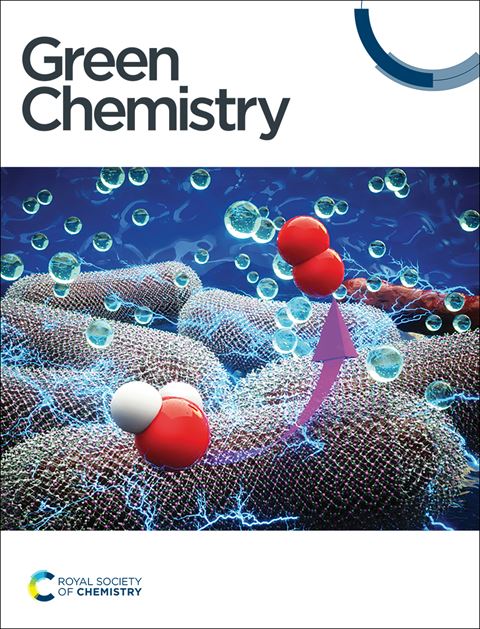利用工程化糖苷-3氧化酶†合成稀有糖的新化学酶方法
IF 9.3
1区 化学
Q1 CHEMISTRY, MULTIDISCIPLINARY
引用次数: 0
摘要
稀有糖是单糖和双糖,因其独特的性质和有益的健康作用而受到高度重视。它们的稀缺性导致了从自然资源中提取的效率低下,促使了几种化学和酶的方法的发展,以改善它们的合成。在这项研究中,我们的目标是优化一个区域和立体选择性的化学酶合成罕见的糖d -醛。我们使用细菌糖苷-3氧化酶,根据C1取代的存在,在C2或C3位置氧化D-Glc,转化为相应的酮衍生物。通过蛋白质工程,经过7轮定向进化,我们将酶对D-Glc的催化活性提高了20倍,将其操作稳定性提高了10倍。该工程酶以1- o -苄基- d -葡萄糖苷为底物,确保C3位置的区域选择性氧化,然后是立体选择性化学还原和脱保护步骤,以81%的总收率提供D-allose。这种创新的策略代表了一种新颖、直接的合成D-allose的方法,避免了费力、耗时的纯化和复杂、冗长的保护-去保护策略。重要的是,它显示了通过环保和经济高效的工艺合成其他稀有C3外显体的潜力,可用于制药和食品技术。本文章由计算机程序翻译,如有差异,请以英文原文为准。

A new chemo-enzymatic approach to synthesize rare sugars using an engineered glycoside-3-oxidase†
Rare sugars are monosaccharides and disaccharides highly valued for their unique properties and beneficial health effects. Their scarcity has led to inefficient extraction from natural sources, prompting the development of several chemical and enzymatic methods to improve their synthesis. In this study, we aim to optimize a regio- and stereoselective chemo-enzymatic process for synthesizing the rare sugar d-allose. We use a bacterial glycoside-3-oxidase that oxidizes d-Glc at the C2 or C3 position, depending on the presence of a C1 substitution, being converted into the respective keto-derivatives. Through protein engineering, we improve the enzyme's catalytic activity for d-Glc by 20-fold after seven rounds of directed evolution and increase its operational stability by 10-fold. The engineered enzyme uses 1-O-benzyl-d-glucoside as substrate, ensuring regioselective oxidation at the C3 position, followed by a stereoselective chemical reduction and deprotection step, affording d-allose with an overall yield of 81%. This innovative strategy represents a novel, straightforward approach for synthesizing d-allose, avoiding laborious, time-consuming purifications and complicated and lengthy protection–deprotection strategies. Importantly, it shows potential for synthesizing other rare C3 epimers of biomass sugars through eco-friendly and cost-effective processes, with applications in pharmaceuticals and food technology.
求助全文
通过发布文献求助,成功后即可免费获取论文全文。
去求助
来源期刊

Green Chemistry
化学-化学综合
CiteScore
16.10
自引率
7.10%
发文量
677
审稿时长
1.4 months
期刊介绍:
Green Chemistry is a journal that provides a unique forum for the publication of innovative research on the development of alternative green and sustainable technologies. The scope of Green Chemistry is based on the definition proposed by Anastas and Warner (Green Chemistry: Theory and Practice, P T Anastas and J C Warner, Oxford University Press, Oxford, 1998), which defines green chemistry as the utilisation of a set of principles that reduces or eliminates the use or generation of hazardous substances in the design, manufacture and application of chemical products. Green Chemistry aims to reduce the environmental impact of the chemical enterprise by developing a technology base that is inherently non-toxic to living things and the environment. The journal welcomes submissions on all aspects of research relating to this endeavor and publishes original and significant cutting-edge research that is likely to be of wide general appeal. For a work to be published, it must present a significant advance in green chemistry, including a comparison with existing methods and a demonstration of advantages over those methods.
 求助内容:
求助内容: 应助结果提醒方式:
应助结果提醒方式:


